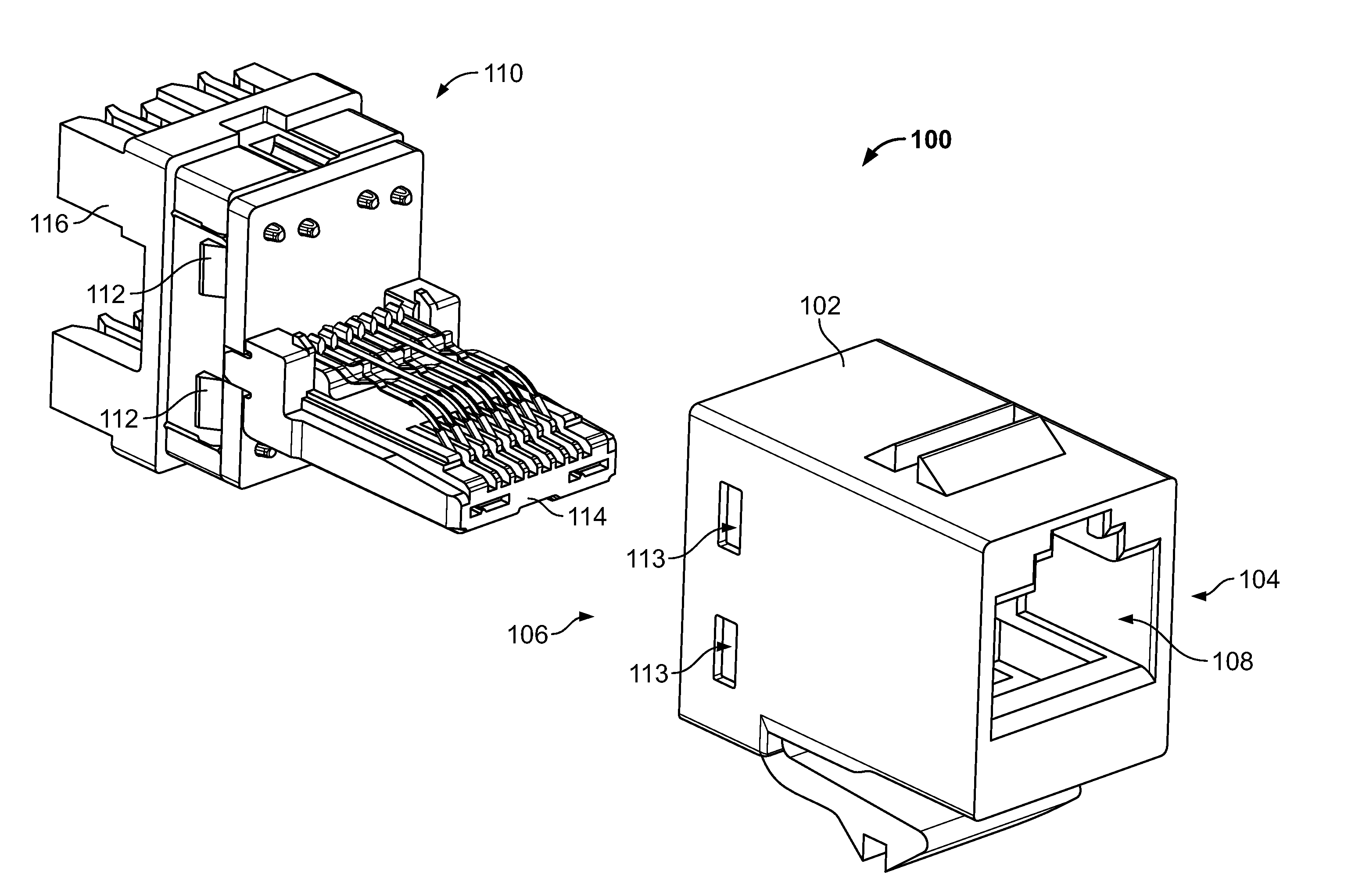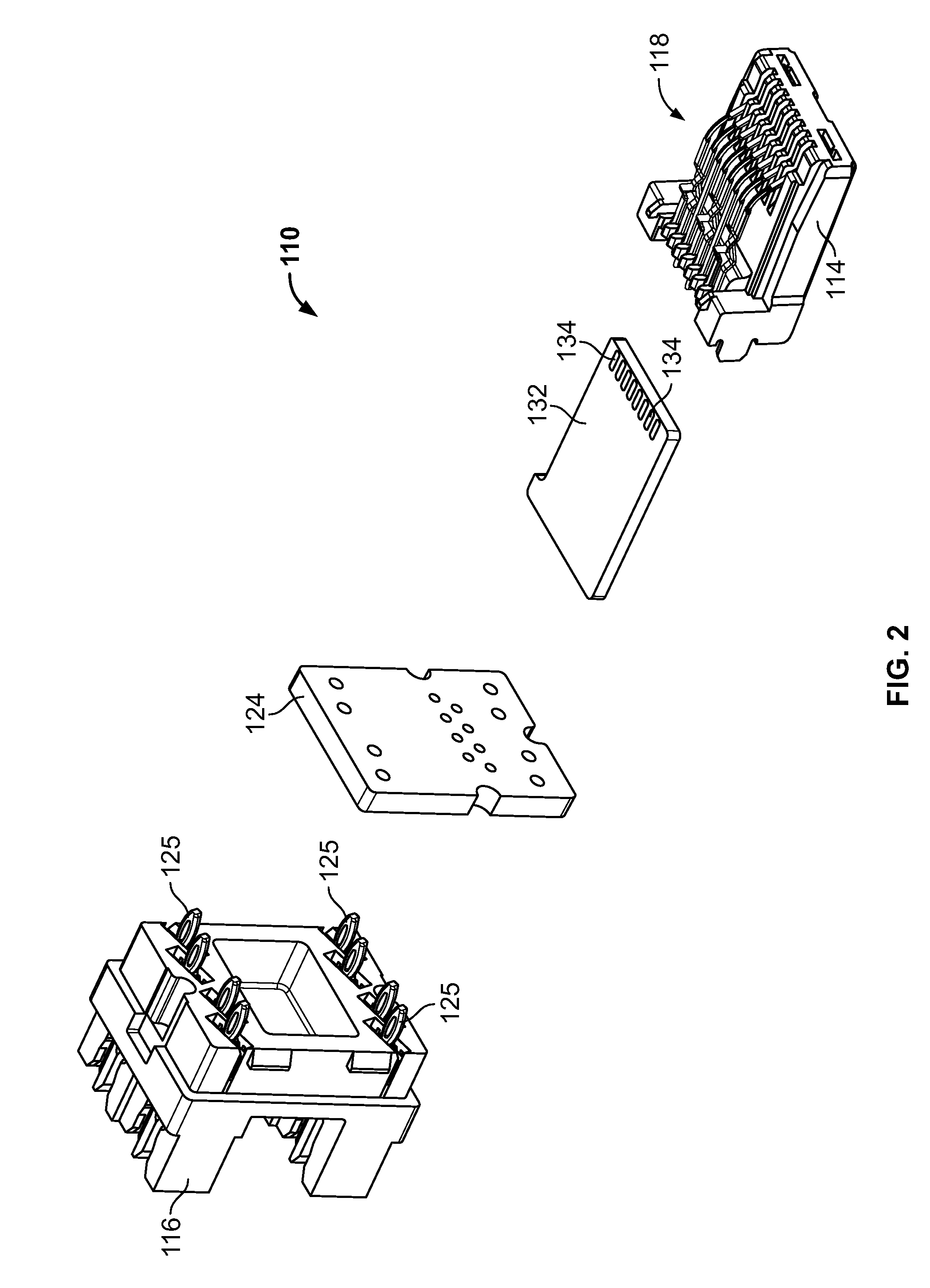Electrical connectors and circuit boards having non-ohmic plates
a technology of electrical connectors and circuit boards, applied in the direction of high-frequency circuit adaptations, electrical apparatus construction details, coupling device connections, etc., can solve the problems of connectors not being able to effectively use non-ohmic trace, affecting the performance of electrical connectors, and -ohmic trace affording limited effect on electrical performan
- Summary
- Abstract
- Description
- Claims
- Application Information
AI Technical Summary
Benefits of technology
Problems solved by technology
Method used
Image
Examples
Embodiment Construction
[0022]FIG. 1 is an exploded view of an electrical connector 100 formed in accordance with one embodiment. As shown, the connector 100 is a modular connector, such as an RJ-45 jack assembly. The connector 100 is configured for joining with a mating plug (not shown). While the connector 100 is shown and described with reference to an RJ-45 jack assembly the subject matter herein may be used with other types of connectors, and the RJ-45 jack assembly is merely illustrative of an exemplary embodiment. The connector 100 may be used for data and / or power transmission and may also be used with differential pair multi-conductor transmission lines.
[0023]As will be discussed in greater detail below, embodiments described herein include circuit boards that utilize non-ohmic plates to improve the electrical performance of the connector 100 or any other device that the circuit board(s) may be used with. For example, the connector 100 may use one or more non-ohmic plates to reduce near-end crosst...
PUM
 Login to View More
Login to View More Abstract
Description
Claims
Application Information
 Login to View More
Login to View More - R&D
- Intellectual Property
- Life Sciences
- Materials
- Tech Scout
- Unparalleled Data Quality
- Higher Quality Content
- 60% Fewer Hallucinations
Browse by: Latest US Patents, China's latest patents, Technical Efficacy Thesaurus, Application Domain, Technology Topic, Popular Technical Reports.
© 2025 PatSnap. All rights reserved.Legal|Privacy policy|Modern Slavery Act Transparency Statement|Sitemap|About US| Contact US: help@patsnap.com



